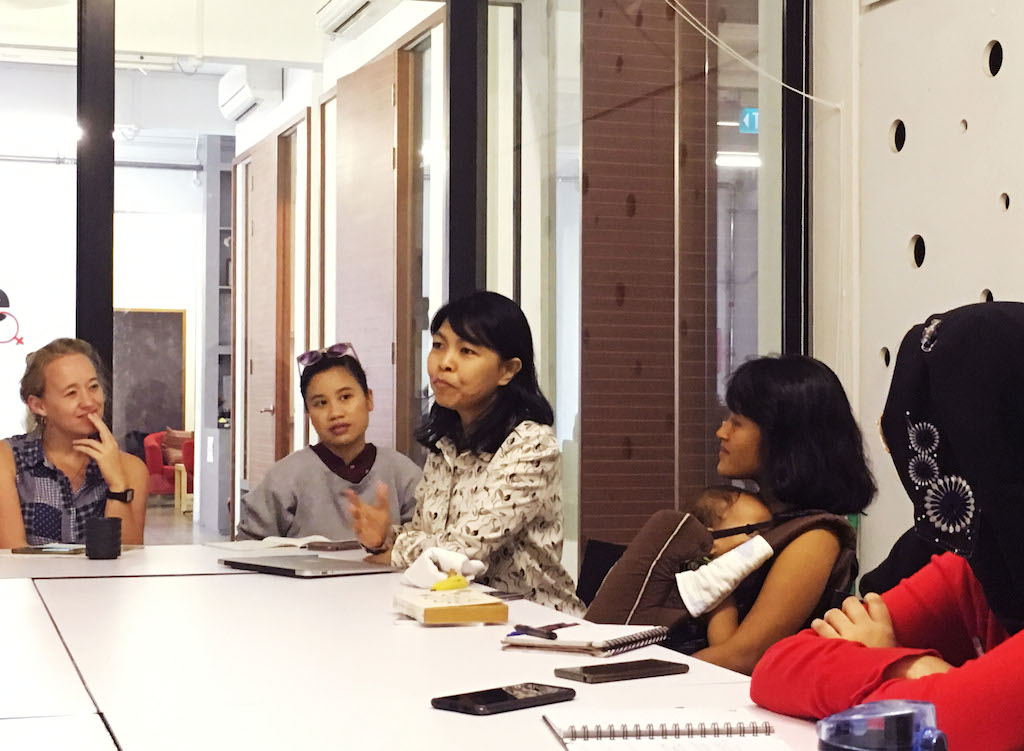-
Advocacy Theme
-
Tags
- Abortion
- Adoption
- Caregiving
- CEDAW
- Disability
- Domestic Violence
- Domestic Workers
- Harassment
- Healthcare
- Housing
- International/Regional Work
- Maintenance
- Media
- Migrant Spouses
- Migrant Workers
- Muslim Law
- National budget
- Parental Leave
- Parenthood
- Polygamy
- Population
- Race and religion
- Sexual Violence
- Sexuality Education
- Single Parents
- Social Support
- Sterilisation
- Women's Charter
A Recap: Talking about human rights work with Nora Murat
May 30th, 2019 | Family and Divorce, Muslim Women's Rights, News, Sexual and Reproductive Health
written by Megan Tan, AWARE intern
On 23 May, AWARE had the pleasure of hosting Nora Murat, formerly regional director of the International Planned Parenthood Federation (IPPF)’s East and South East and Oceania Regional Office (ESEAOR).
IPPF ESEAOR comprises of 23 member associations that all deal with issues surrounding sexual health and family planning. The Federation is responsible for supporting these associations through various avenues, such as areas of strategic planning, programme development and operations.
Nora joined AWARE staff and members—including AWARE president Margaret Thomas—and guests from a few other organisations (such as Power Fund recipients Daughters of Tomorrow and Project X) for a discussion about her years of work in the human rights field. Before coming to IPPF, Nora previously worked with the Asia Foundation and Sisters in Islam, and served as Executive Director of Amnesty International Malaysia.
Here are a few lessons she shared.
1. Compromise can be constructive
Nora got the ball rolling by reflecting that at times, she said, it is necessary for civil society groups to set aside differences as organisations and work with one another on urgent issues.
She recalled an incident where the IPPF was able to form a coalition with a Catholic organisation in the Philippines. In that case, IPPF and the other organisation agreed to work together on the issue of HIV, despite having very different views on LGBTQ rights.
2. Make your message relatable
One of the questions raised by attendees during the session was how to best communicate with different communities that might employ different language when talking about issues. For example, conservative Muslims may not be receptive to conversations about family planning if the issue was framed in a certain way.
Nora agreed that, generally speaking, conversations about reproductive health and family planning are tricky. “Language is so difficult,” she said. “We speak the same words but have different interpretations of them.”
If the goal is to address as wide a public as possible, she suggested that anchoring topics in practical, real-life concerns would make them easier to relate to than abstract or intangible concepts. One might, for example, bring up family planning by describing how having too many children would impact a family financially.
Having a “face” to put to a cause can help to make the cause easier to relate to, especially if that face is a person within the community. An insider may be more aware of the cultural myths and sensitivities surrounding an issue, and thus better placed to advise both sides.
3. Work with the media, not against it
Nora also stressed the importance of engaging with journalists. Journalists need to understand clearly where an organisation is coming from, or they risk misinforming readers. Thus, holding trainings with journalists to educate them on the issues at hand, and how to report on them sensitively, is critical.
Social media also plays an important role in today’s advocacy, she noted, especially when it comes to sparking a conversation with younger demographics. Social media could also be an important tool in forming a network across different organisations. Organisations could even “work across causes” on social media, mobilising their combined forces in tandem.
However, one attendee pointed out that social media should not eclipse using other, traditional forms of media for advocacy. She recalled a campaign by her organisation in which they distributed zines. While social media posts might be buried in people’s feeds, she said, the organisation found that people did pay attention to the zines. Both Nora and the participant agreed there should be a balance of different formats and platforms.
The session concluded with an attendee asking Nora what kept her going, despite the overwhelming human rights issues facing the world today.
“The engagement that organisations are having with the youth,” Nora replied. “That gives me hope.”




